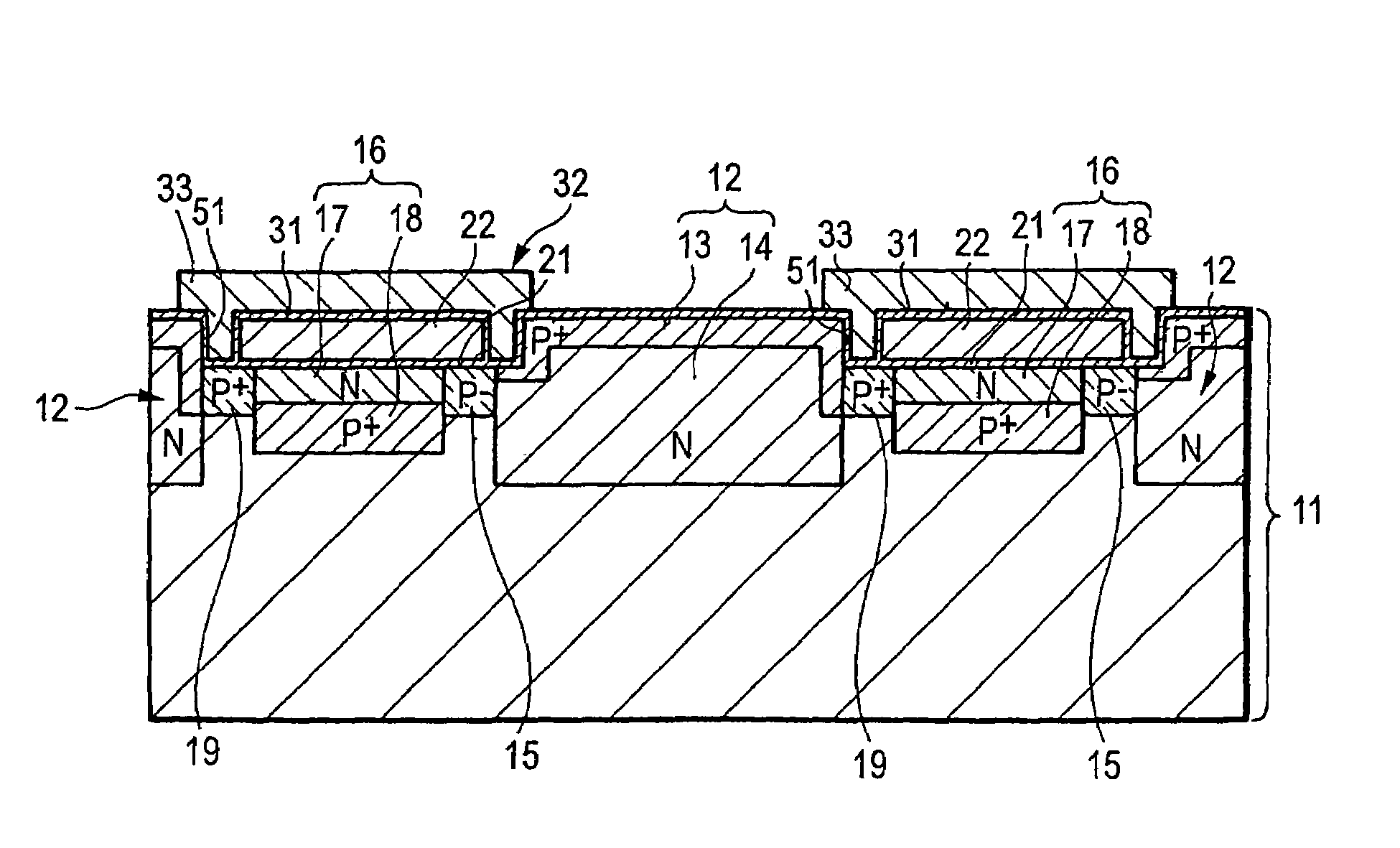Solid-state image pickup device and manufacturing method for the same
a solid-state image and pickup device technology, applied in the direction of color television, television system, radio control device, etc., can solve the problems of reducing the size of pixels, increasing the reading voltage and reducing the height difference between electrodes and others to a greater degree than currently achieved, so as to reduce the height difference of the substrate surface, reduce the reading voltage, and prevent the effect of smear characteristics from being reduced
- Summary
- Abstract
- Description
- Claims
- Application Information
AI Technical Summary
Benefits of technology
Problems solved by technology
Method used
Image
Examples
first embodiment
(First Embodiment)
[0035]By referring to FIGS. 1A and 1B, a solid-state image pickup device of a first embodiment is described. Specifically, FIG. 1A is a plan view of layout, and FIG. 1B is the schematic cross-sectional view cut along a line 1B—1B of FIG. 1A.
[0036]As shown in FIGS. 1A and 1B, in a solid-state image pickup device 1, a substrate 11 is formed with a groove 51. The groove 51 is formed in a region to which an electrode is formed in a transfer register direction (vertical transfer direction), for example. The groove 51 has the depth of 0.01 μm to 5 μm from the surface of the substrate 11, for example. This depth is about the same or less as that of a bonding section between a hole accumulation layer 13 and an N-type layer 14, both of which are formed on a photoelectric conversion region 12. The substrate 11 is a semiconductor substrate, e.g., silicon substrate. The groove 51 and the photoelectric conversion region 12 are formed adjacent to each other. The photoelectric co...
second embodiment
(Second Embodiment)
[0040]Described next is a solid-state image pickup device of a second embodiment of the present invention by referring to the schematic cross-sectional view of FIG. 2.
[0041]As shown in FIG. 2, the structure of the second embodiment is the same as that of the first embodiment except the following. That is, as to the electrode 22, its parts in the transfer register direction (vertical transfer direction) are formed, in the groove 51, at least partially on the pixel separation region 19, and on the vertical register 16 and the reading gate 15.
third embodiment
(Third Embodiment)
[0042]Described next is a solid-state image pickup device of a third embodiment of the present invention by referring to the schematic cross-sectional view of FIG. 3.
[0043]As shown in FIG. 3, the structure of the third embodiment is the same as that of the first embodiment except the following. That is, as to the electrode 22, parts in the transfer register direction (vertical transfer direction) are formed, in the groove 51, at least partially on the pixel separation region 19, and partially on the vertical register 16, and the reading gate 15.
[0044]With the electrode 22 formed as such in the second and third embodiments, the same effects as described in the first embodiment can be achieved, e.g., reduction of the smear characteristics, and reduction of the reading voltage. At the time of manufacturing the electrode 22 and others, any displacement caused by mask alignment in a lithography process becomes favorably allowable. As such, from a manufacturing viewpoint...
PUM
 Login to View More
Login to View More Abstract
Description
Claims
Application Information
 Login to View More
Login to View More - R&D
- Intellectual Property
- Life Sciences
- Materials
- Tech Scout
- Unparalleled Data Quality
- Higher Quality Content
- 60% Fewer Hallucinations
Browse by: Latest US Patents, China's latest patents, Technical Efficacy Thesaurus, Application Domain, Technology Topic, Popular Technical Reports.
© 2025 PatSnap. All rights reserved.Legal|Privacy policy|Modern Slavery Act Transparency Statement|Sitemap|About US| Contact US: help@patsnap.com



